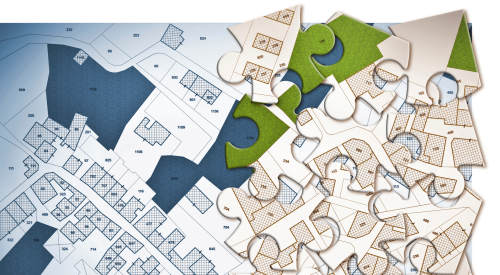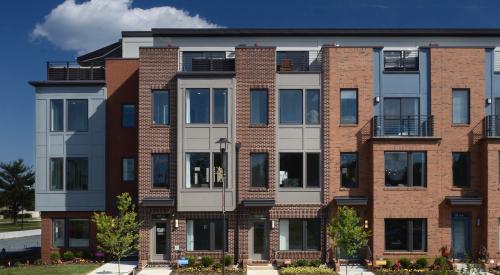Oregonians seem to love the urban growth boundary that surrounds Portland. Since the law creating the UGB was implemented in 1978, five years after passage, voters repeatedly have rejected ballot initiatives to repeal it. City planners across the country hail Portland as the poster child of the war against sprawl. But national builders are ready to fight to keep growth boundaries from spreading. Where does the truth lie?
The latest report, by the National Center for Smart Growth Research and Education, clearly comes down on the side of Oregon's growth-management initiatives, including the UGB. "Measuring Urban Sprawl: Is Portland Winning the War on Sprawl?" by Gerrit-Jan Knaap and Yan Song is available on the American Planning Association's Web site.
"Portland is winning against sprawl at the neighborhood scale or at least appears to have won some important battles," says Knaap, director of the center and a University of Maryland professor of urban studies and planning. He says Portland's experience confirms that "well-designed and sustained growth-management strategies can have their desired effect of changing land-use patterns."
Center researchers studied Washington County, Ore., one of three counties within Portland's UGB, and found that neighborhoods there have:
In 1994, the researchers say, new housing in the Portland area averaged five dwelling units per acre. But by 1998, the density of new development had risen to eight units per acre. Increased density is one of the goals behind the UGB.
Not So Fast
Critics in the housing industry say that whatever positive impact Portland's UGB might have comes at the cost of a devastating impact on housing affordability. They cite raw land prices within the UGB ranging from $300,000 to $450,000 an acre for developable residential sites.
"Then you'll spend anywhere from $22,000 to $35,000 per lot on engineering and development," says Portland builder Jim Irvine, chairman of The Conifer Group and a former NAHB president (1995). "I've been a big supporter of Oregon's land-use system and part of it since it started in the 1970s. It's a grand experiment, and there have been big victories for Portland. But now it's a 1973 law regulating a 2004 society. When you look at $300,000 an acre for dirt, how do you build affordable housing? If 35% of our growth hadn't gone to Vancouver, Washington, we'd have a real disaster."
However, Irvine points out it's difficult to isolate the UGB's impact from all the other supply and demand factors that influence housing prices. Latest market data from PB columnist John Burns shows that Portland has a median new home price of $192,300 and a housing-cost-to-income ratio of 30%. Orange County, Calif., with no UGB, stands at $526,800 and 69%.
Counterpoint
Ethan Seltzer, director of Portland State University's School of Urban Studies and Planning, counters that it's fallacious to blame the increase in Portland housing prices on the UGB. "A lot of data suggests the rate of growth in the 1990s is a far more important factor. Portland is required to have a 20-year supply of residential land within the UGB," he points out. "I think the critics are self-serving and way off base."
Knaap supports that contention. "The growth of households and production of housing has been pretty equal in Portland - better than in most metro areas," he says. "Remember, the UGB is not static. It must be expanded to maintain that 20-year supply of land for growth. I think the concerns about the UGB are vastly overblown."
Look Again
Irvine says one of the biggest problems is that Oregon's land-use and tax regulations are incongruous. "If you have a farm-use designation, you don't pay property taxes. To get that designation, you don't have to do much more than put a cow on the site and grow grass. There are 8,000 acres inside the UGB where owners have that designation and are sitting on land without any carrying costs. The land is appreciating faster than the stock market. Corporations and investors hold much of it. Yet that land is classified as part of the 20-year inventory of developable land. Our tax policy contradicts our land-use policy."
Irvine also points out that while the UGB grew by 15,000 acres in 2002, only a small portion of that land is developable today, though all of it is classified as part of the residential land inventory.
Oregon's economy is in rough shape, and UGB critics point to the growth boundary as part of the problem. "We don't have enough industrial land or housing land," Irvine says. "Our builders have learned how to do high-density housing and make money at it ahead of the rest of the country. We have great products for empty nesters and yuppies but not enough for traditional families.
"Our goals are wonderful. We plan for open space and connectivity. It's just that the rules make it impossible to fully meet those goals."
The debate rages, but don't be surprised to see Portland held up as the example of how your area should attack sprawl.












